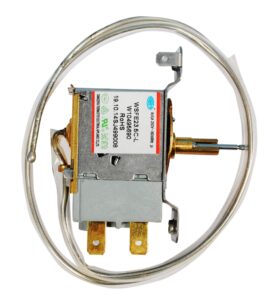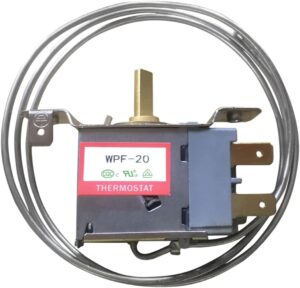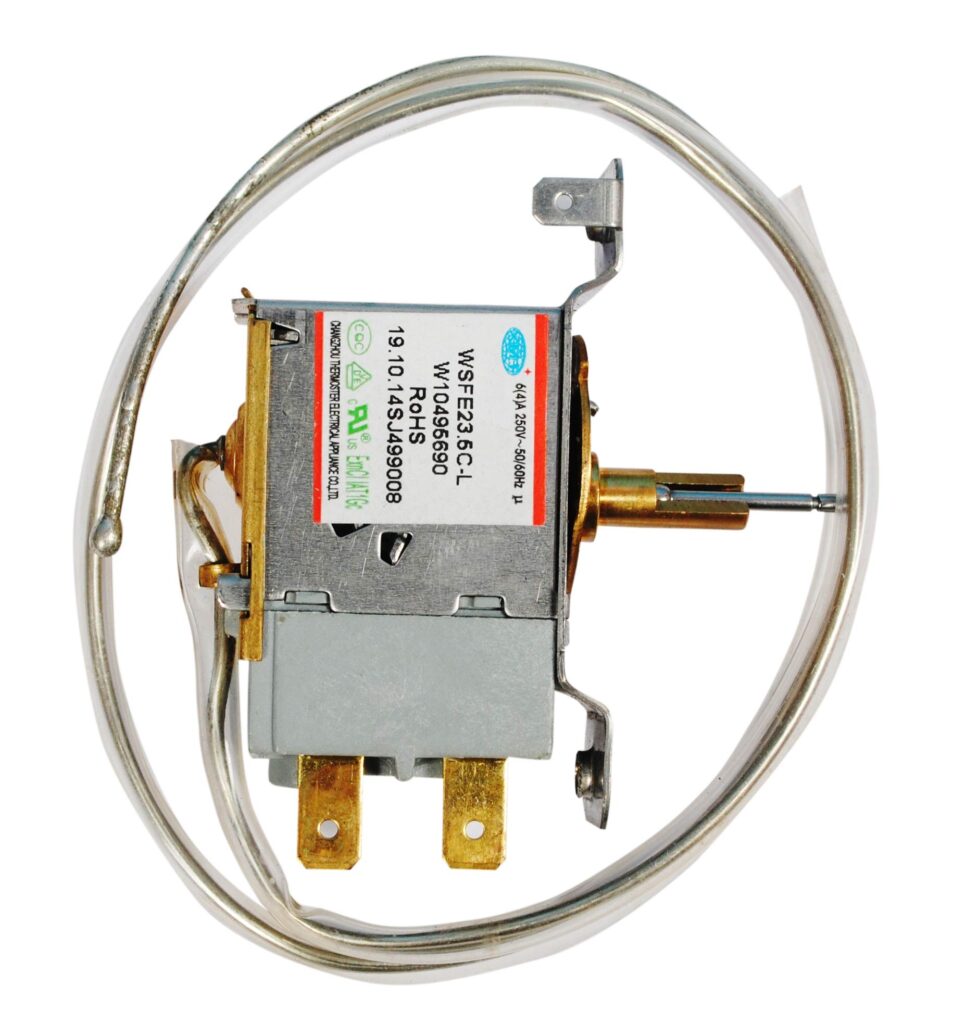Role of Refrigerator Thermostat
A thermostat in a refrigerator is a fundamental component that plays a crucial role in maintaining the optimal temperature for storing food and preserving its freshness. This device is responsible for regulating the cooling system within the refrigerator to ensure that it operates efficiently and keeps the internal temperature within the desired range.
Working of Refrigerator Thermostat

The primary purpose of the refrigerator thermostat is to control the temperature inside the appliance. Refrigerators are designed to keep food at temperatures that slow down the growth of bacteria and other microorganisms, thereby preventing spoilage and ensuring food safety. The refrigerator thermostat acts as a temperature-sensitive switch that triggers the refrigerator’s cooling mechanisms to start or stop based on the current temperature.
Temperature Sensing Mechanism: At the heart of the refrigerator thermostat is a temperature-sensing mechanism. This typically involves a temperature sensor, often in the form of a bulb or a coil, strategically placed inside the refrigerator or freezer compartments. The sensor continuously monitors the temperature of the air in these compartments.
User Interface and Settings: The refrigerator thermostat is equipped with a user interface that allows individuals to set their preferred temperature settings. This interface is often located within the fresh food compartment, and users can adjust the thermostat to achieve the desired level of cooling. This user-controlled setting influences the thermostat’s operation.
Control of the Compressor: The refrigerator’s cooling system relies heavily on the compressor, which is responsible for circulating refrigerant throughout the appliance. When the temperature sensed by the thermostat exceeds the set point, the thermostat signals the compressor to turn on. Activating the compressor initiates the refrigeration cycle, where the refrigerant absorbs heat from the refrigerator’s interior and releases it outside.
Temperature Regulation Cycle: As the compressor runs, the refrigerant flows through the evaporator coils inside the refrigerator. This process leads to the removal of heat from the air inside the appliance, causing it to cool down. Once the temperature inside the refrigerator reaches the set point as determined by the thermostat, the thermostat signals the compressor to turn off. This cycle repeats as necessary to maintain a consistent and desired temperature.
Freezer Compartment Thermostat: Many refrigerators have separate thermostats for the freezer compartment. This allows users to control the temperatures of the refrigerator and freezer independently. The freezer thermostat operates in a similar manner to the fresh food thermostat, but it is dedicated to regulating the colder temperatures required for freezing food.
Importance of Proper Temperature Settings: Maintaining the correct temperature settings in the refrigerator is crucial for food safety. The U.S. Food and Drug Administration (FDA) recommends keeping the refrigerator temperature at or below 40 degrees Fahrenheit (4 degrees Celsius) and the freezer at 0 degrees Fahrenheit (-18 degrees Celsius). These temperature ranges help slow the growth of bacteria, ensuring that perishable foods remain safe for consumption.
Troubleshooting and Maintenance: If users notice that their refrigerator is not maintaining the correct temperature, the thermostat is one of the components to investigate. A malfunctioning thermostat can lead to inadequate cooling or excessive cooling, both of which can impact the quality and safety of stored food. In such cases, referring to the refrigerator’s user manual or seeking assistance from a qualified appliance technician is advisable for proper diagnosis and repair.
Types of Refrigerator Thermostats:
Refrigerators employ different types of thermostats based on their design and functionality. The two main types are mechanical thermostats and electronic thermostats.
- Mechanical Thermostats: Mechanical thermostats use a simple, reliable mechanism to control the temperature. A bimetallic strip, made of two different metals with different rates of expansion, bends in response to temperature changes. This bending action triggers a switch that controls the compressor. While mechanical thermostats are cost-effective and durable, they may not offer the same precision as electronic counterparts.
- Electronic Thermostats: Electronic thermostats, on the other hand, use advanced electronic components for temperature control. These thermostats offer greater precision, allowing for more accurate temperature settings. They often come with digital displays, enabling users to set and monitor specific temperatures. Electronic thermostats are commonly found in modern, high-end refrigerators, providing enhanced functionality and customization options.

